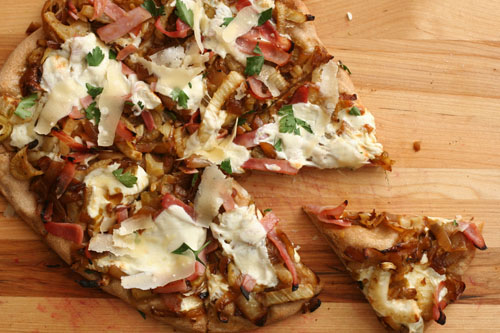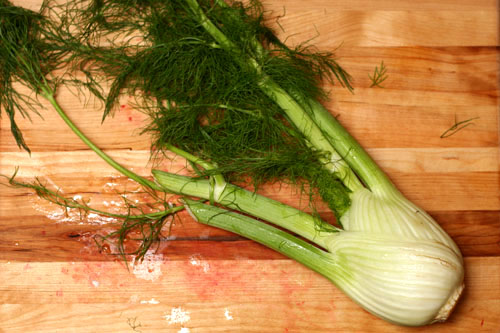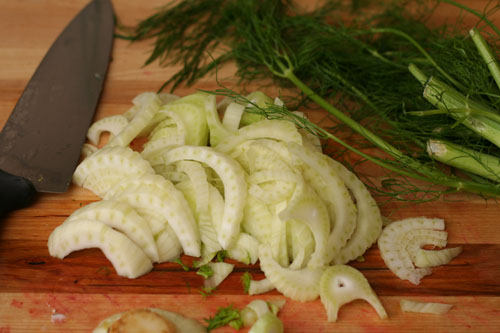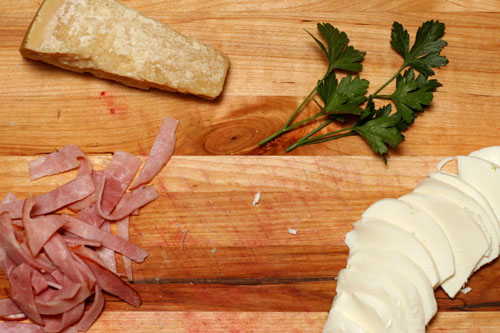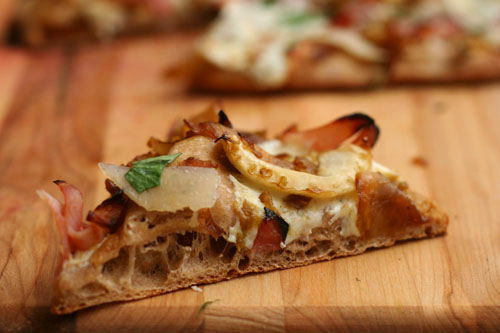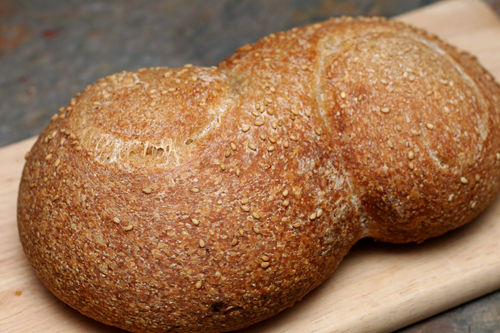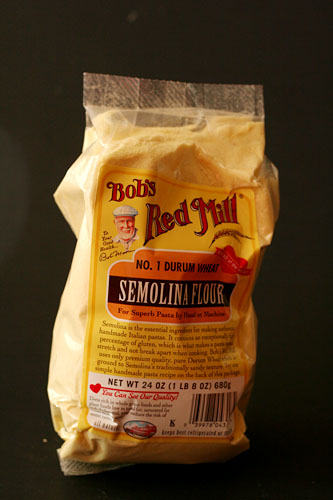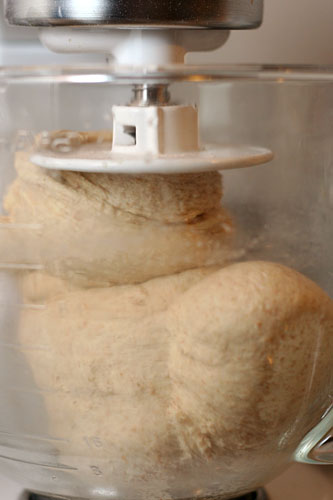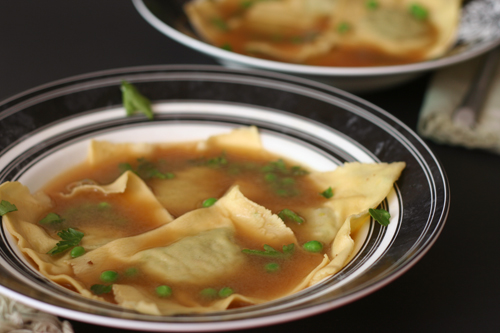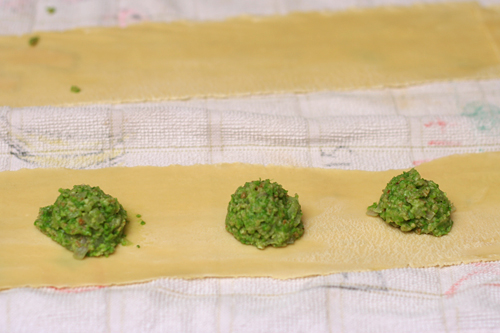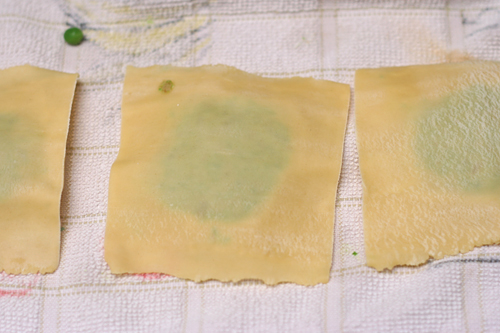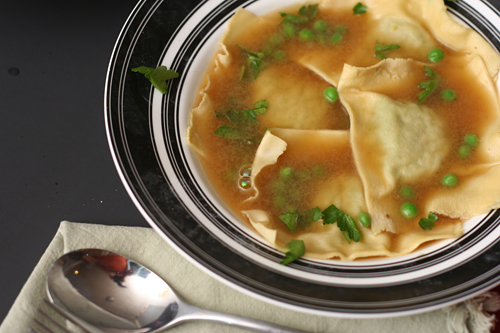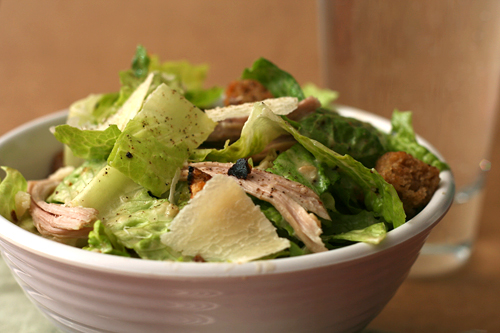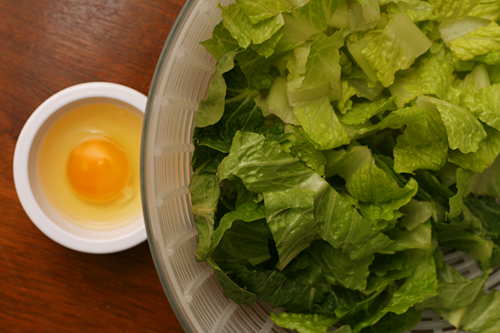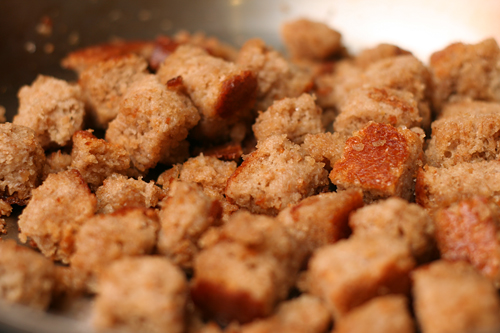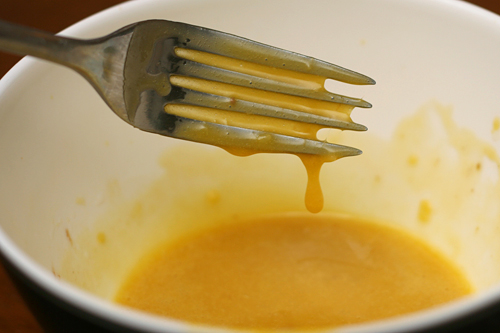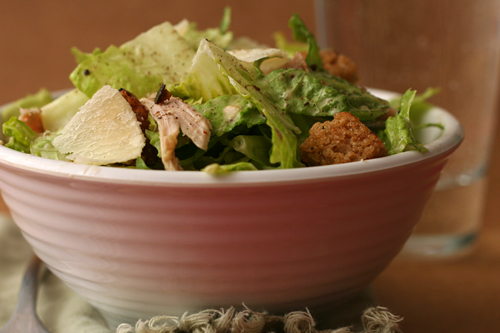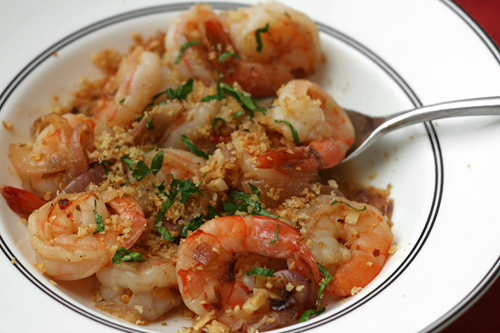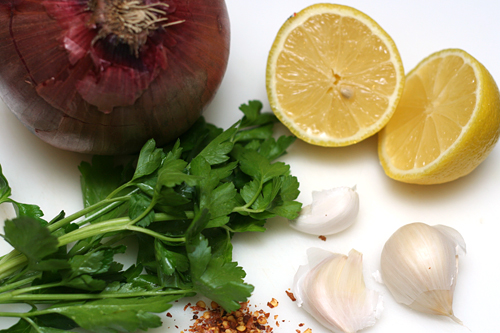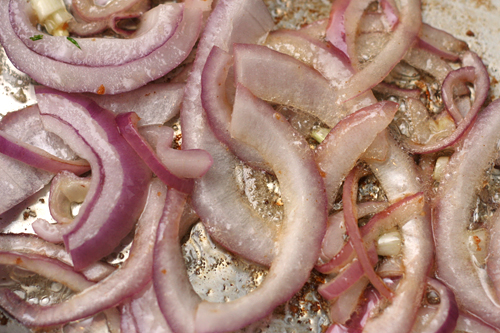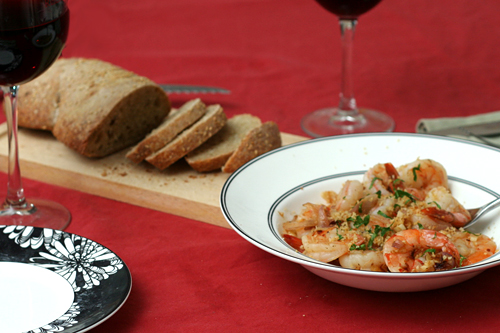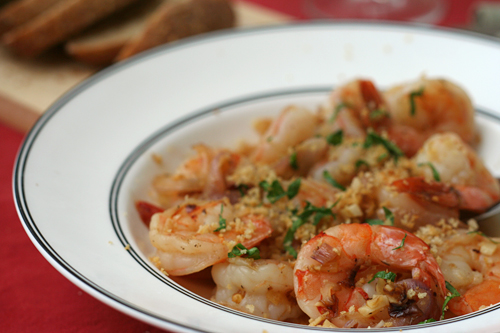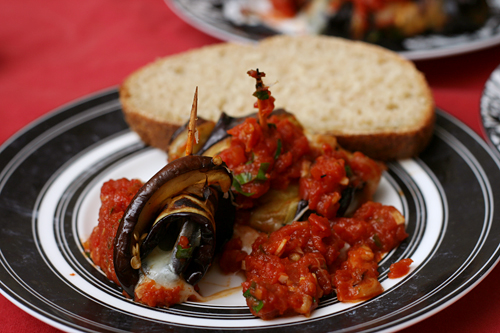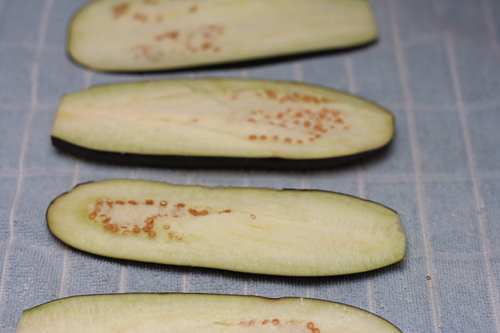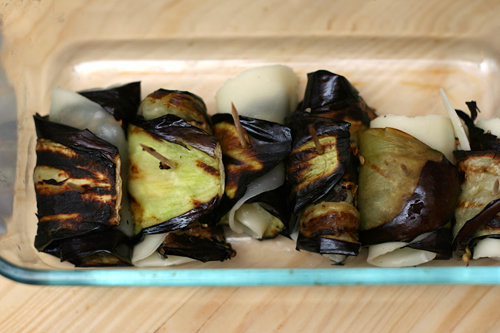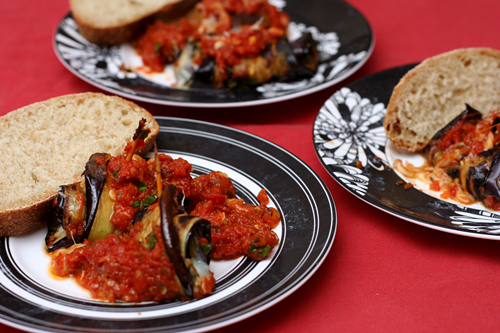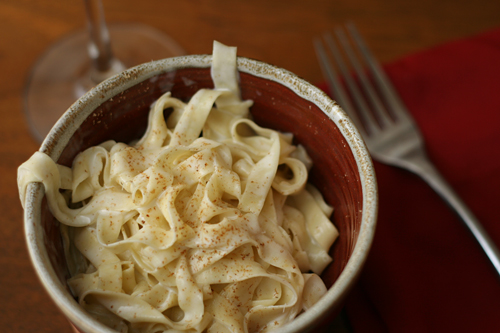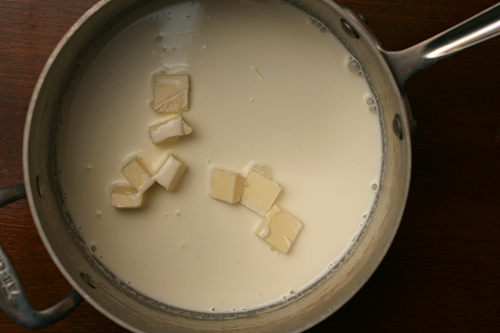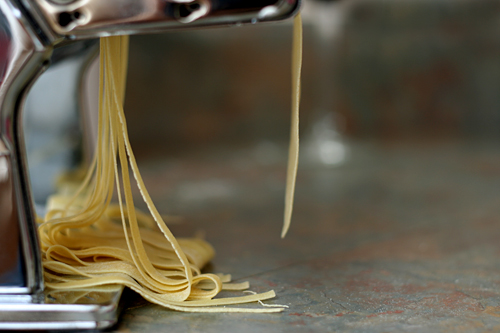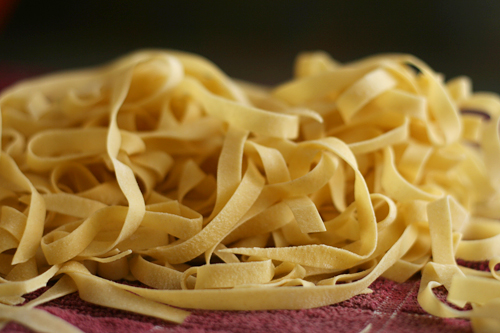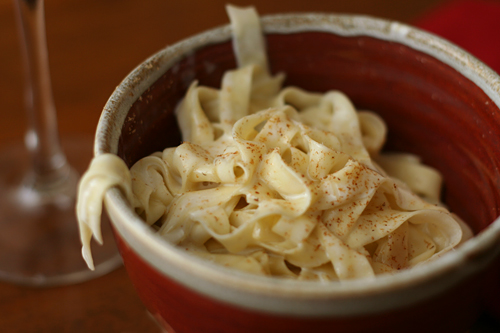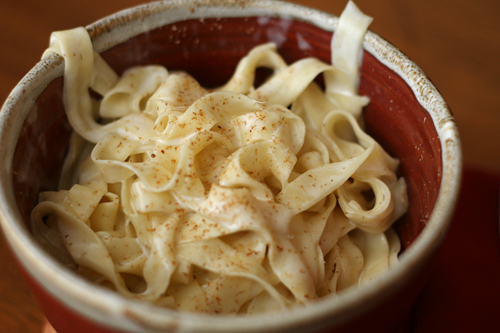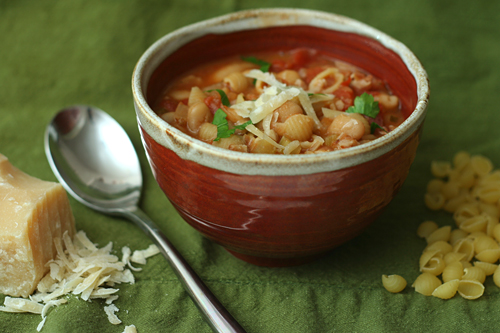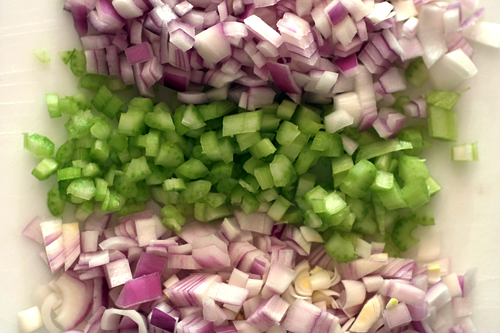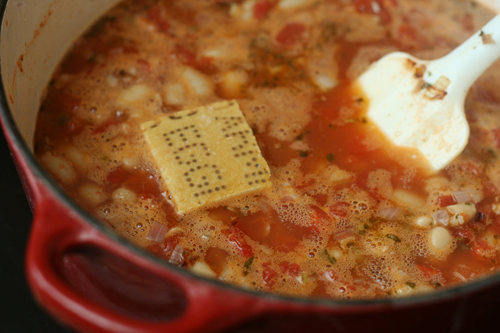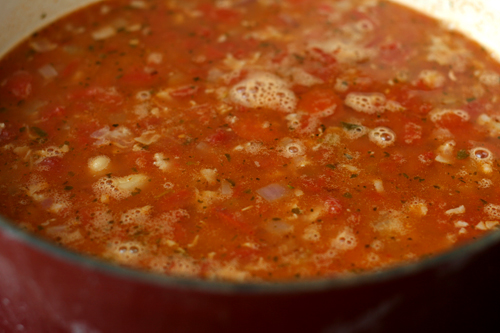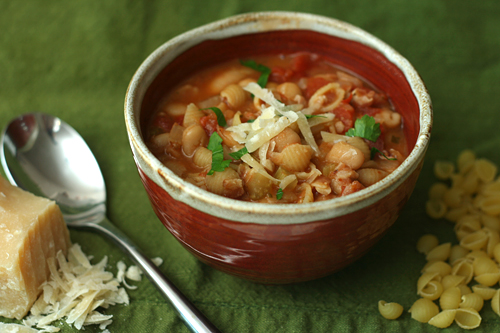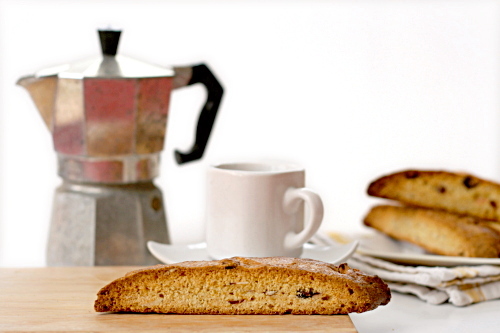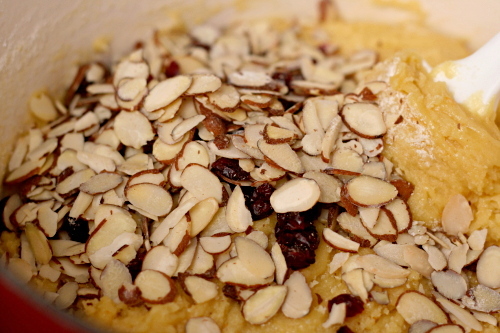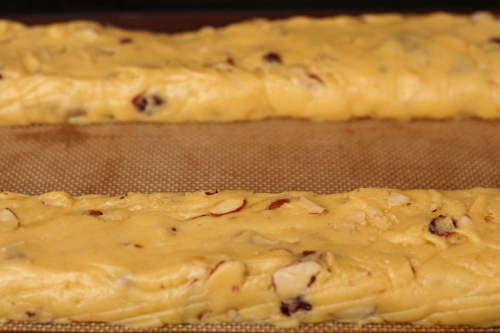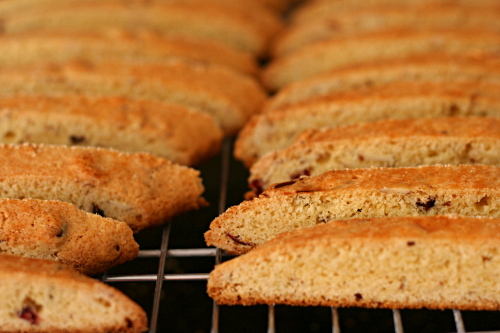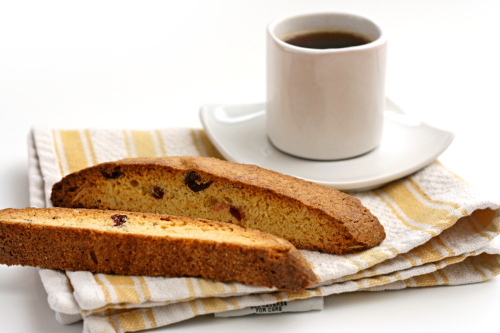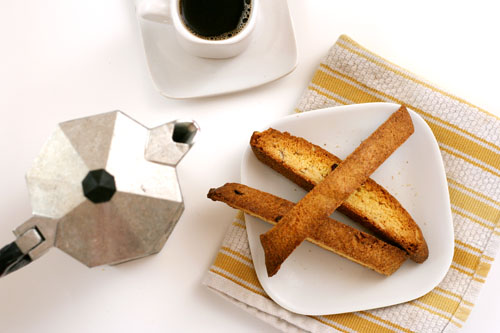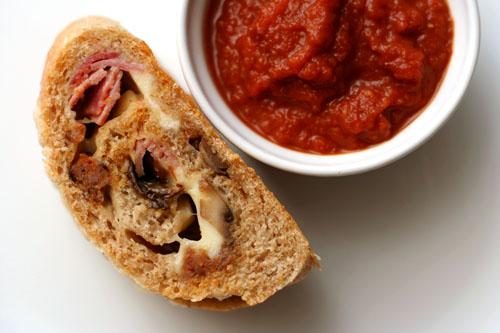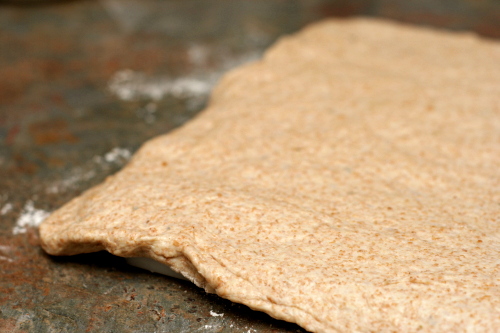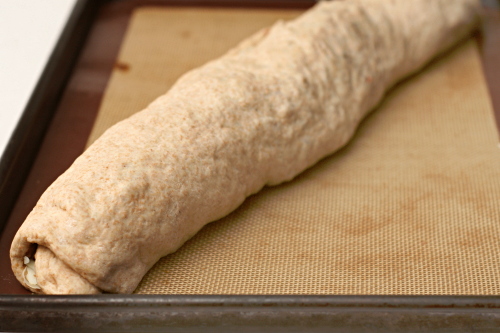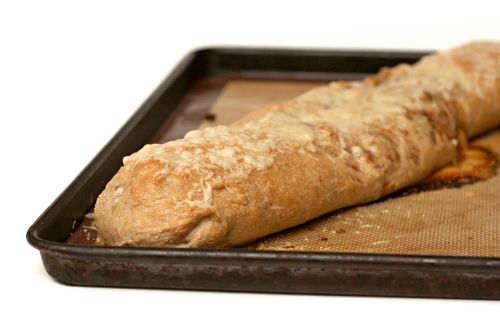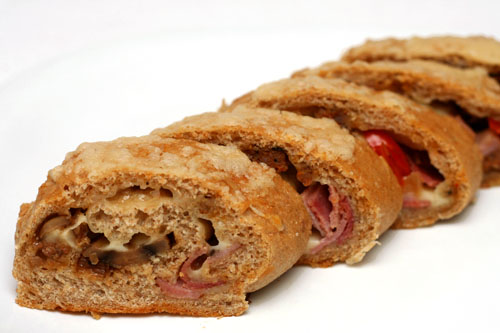After a year and a half living in a small town, I still haven’t fully adjusted to the grocery store situation. I don’t think I’ve walked out of the store here once without thinking wistfully of Wegman’s. My new store isn’t a bad place; I’m just spoiled. They do occasionally stock random items, and I’ve learned to jump on those opportunities and worry about finding recipes later.
Sometimes I buy the item just to encourage the store to keep it up. In the last few months, we’ve eaten haricot vert, Copper River salmon, yellow carrots, and now fennel. Since I moved here, I’ve bitterly overlooked fennel recipes, thinking my fennel days were over, and then once I found fennel, I could only remember one of those recipes.
It’s a memorable recipe because it has a lot going for it. For one thing, it’s pizza, which is always good, but it’s even better since I’ve started playing with a new crust recipe recently (which will be the next blog entry). For another, the onions and fennel are caramelized, and who doesn’t like turning vegetables into candy?
Lindsay laments that this pizza was pale and homely, so I added some color in the form of black forest ham (ideally prosciutto, but my store was out of it) and a sprinkle of parsley. Not only is the splatter of pink and scattering of green welcome, but the salty bites of ham and bitter bits of parsley complimented the sweet onions and the licorice of the fennel. It’s too bad I don’t know when the next time I’ll find fennel is, because I’d love to make this one again.
One year ago: Quinoa Tabbouleh
Two years ago: Croissants
Three years ago: Franks and Beans
Printer Friendly Recipe
Pizza with Caramelized Onions, Fennel, and Fresh Mozzarella (adapted from Love and Olive Oil)
Serves 6
I cooked the onions and fennel separately (not because I love doing dishes and wanted to use more than necessary; I had leftover caramelized onions to be used), and I found that the fennel didn’t caramelize, it just browned slightly. It may behave differently if onions are around.
1 pound pizza dough, fully risen and at room temperature (½ of this recipe)
1 tablespoon olive oil
1 large onion, thinly sliced
1 large fennel bulb, cored and thinly sliced
Salt
8 ounces whole-milk fresh mozzarella cheese, coarsely grated
4 ounces prosciutto, cut into slivers
freshly shaved Parmesan cheese
sprinkling parsley
1. Place a pizza stone on the bottom rack of the oven and preheat the oven to 500ºF. Divide the dough in two and shape each portion into a ball. Set the balls of dough aside, loosely covered, to allow the gluten to relax.
2. Heat the oil in a medium nonstick skillet over medium heat. Add the onions, fennel, and ¼ teaspoon salt; cook, stirring occasionally, until the onions start to brown, about 5 minutes. Reduce the heat to medium-low and continue cooking and occasionally stirring until the onions are golden brown, about 15 minutes.
3. Work with one ball of dough at a time on a lightly floured surface or a damp cloth. Flatten the dough, then pick it up and gently stretch it out, trying to keep it as circular as possible. Curl your fingers and let the dough hang on your knuckles, moving and rotating the dough so it stretches evenly. If it tears, piece it together. If the dough stretches too much, put it down and gently tug on the thick spots. Transfer the round of dough to a large square of parchment paper; slide onto a pizza peel.
4. Top the dough with half of each of the caramelized vegetables, cheese, and prosciutto. Slide the pizza with the parchment onto the hot baking stone. Bake for 8-10 minutes, until the crust is browned around the edges. Transfer the pizza to a cooling rack without the parchment; top with parmesan slivers and a sprinkle of parsley. Let the pizza rest for 5 minutes before serving. Repeat with the remaining ingredients.
